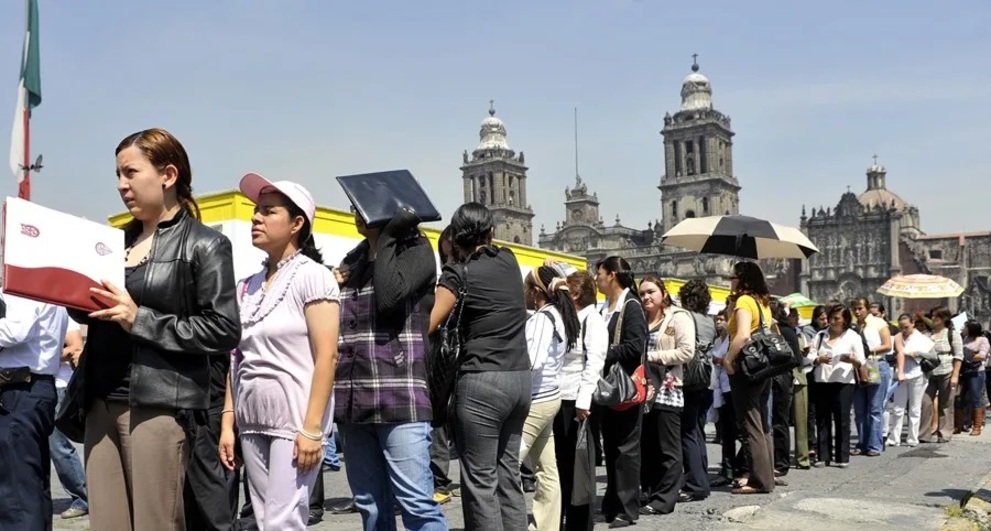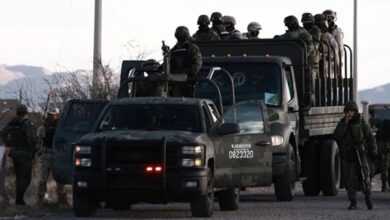Mexico’s Maquiladora Factory Dreams Fade as Tariffs Silence Juárez

In Ciudad Juárez, assembly lines once powered by nearshoring and NAFTA optimism are falling silent. As tariffs, rising wages, and political turmoil squeeze margins, tens of thousands of jobs are being lost—and with them, the belief that border factories can secure the future.
A Factory Floor Goes Quiet
For more than a decade, Fabiola Galicia rose before dawn and slipped into the hum of machines. She started on the line, stitching colors into decorative ribbon, before climbing to oversee a team of thirty in Ciudad Juárez. Her days were fast, noisy, routine—until they weren’t.
By June, her shifts had shrunk to three days a week. By August, she and her husband were both out of work.
A representative from Design Group Americas stood on the factory floor and said what no one wanted to hear: the plant was closing. Three hundred jobs—gone. “They told us the tariffs had affected the company,” Galicia recalled in an interview with Reuters.
The announcement came with little ceremony, but heavy consequences. Design Group Americas had filed for bankruptcy protection, citing U.S. tariffs as one of the causes, Reuters reported. The company declined to comment further.
The closed gate became a symbol. A single maquiladora folding under pressure, yes—but also a warning shot across the border economy that defines Juárez. These duty-free factories, known as maquilas, are the lifeblood of the city, responsible for roughly 60% of local jobs. The formula had seemed foolproof: raw materials in, assembled goods out, all at low cost and high speed, with U.S. buyers just across the bridge.
But that model, forged in the fires of NAFTA and globalization, is now buckling under new weight.
When Tariffs Meet Rising Costs
Between 2019 and 2025, Mexico’s minimum wage in the northern border zone increased by more than 100%. Good news for laborers—but tricky math for factories. Wages rose from 22 pesos an hour (about $1.17) to over 52 pesos ($2.80), pinching margins already under siege from inflation, recruitment struggles, and now, politics.
And the politics are dizzying.
A controversial judicial reform, in which judges are now elected rather than appointed, has investors on edge, worried about the independence of Mexico’s courts. That tension was already simmering when the United States ramped up its tariff regime, targeting steel, autos, and textiles: the very arteries that feed maquiladora exports.
“The industry is in crisis,” María Teresa Delgado, vice president of INDEX Juárez, told Reuters. The challenges were mounting already, she said. “Trump’s tariffs were the cherry on top.”
The economic fallout is snowballing. Projected national GDP growth for 2025 now sits below 1%, Reuters reported. For cities like Juárez, whose fortunes rise and fall with the sound of conveyor belts, that’s not just sluggish growth—it’s a countdown.
Investment Chills and Production Migrates
Money doesn’t like uncertainty, and in 2025, Mexico is feeling the chill.
Reuters reports that foreign direct investment fell 21% nationwide in the first quarter of the year. Chihuahua state, home to Juárez, saw an even steeper drop in manufacturing investment—56%, plunging from $800 million to $348 million.
“Companies are holding off on making decisions and making new investments until there is clarity about what will happen with trade policy,” said Ulises Alejandro Fernández, Chihuahua’s secretary of innovation and economic development, speaking to Reuters.
Some companies aren’t waiting.
Lear Corporation, a major U.S. auto parts supplier, is shifting operations from Juárez to Honduras. French electronics firm Lacroix is exiting North America altogether, citing trade tensions and sustained losses. Others are downsizing to survive. Thor Salayandia, who owns a nail factory in Juárez and leads the Border Block Trade coalition, has reduced his workforce from 90 to 20. “We’ve had to cut and cut,” he told Reuters.
The damage isn’t theoretical. From June 2023 to June 2025, Juárez lost over 64,000 factory jobs. Nearly 14,000 vanished in just the first half of this year. Data from Mexico’s National Institute of Statistics and Geography, cited by Reuters, confirms the bleeding.
The nearshoring boom that once promised security now seems fragile. If predictable access to the U.S. market slips away, what’s left of the maquila miracle?

EFE@Mario Guzmán
The Human Ledger of a Trade War
Numbers can measure layoffs. They can’t measure what’s lost.
East of the city, factory buses once packed with workers now sit idle. Cafeterias that served lunch at shift change sit empty. A daycare center that once stayed open late to match production schedules now closes early, its staff having been quietly cut in half.
For Galicia and her husband, two full-time incomes vanished overnight. The pink slip didn’t just end a job—it erased a routine, a trajectory, a sense of security. “We thought the hard part was getting in,” she told Reuters. She had climbed the ladder. Now, it had been pulled away.
For policymakers in Mexico City and Washington, this is a battle of numbers and incentives: supply chains, security, strategic leverage. But for the people of Juárez, it’s a matter of dinner on the table. Whether school uniforms can still be bought. Whether a down payment on a motorcycle becomes another debt unpaid.
The maquila system has proven durable. It has survived recessions, pandemics, and even the shadow of cartel violence. But its durability depended on certain constants: stable laws, clear contracts, and trust that U.S.-Mexico trade would flow predictably.
That trust is fraying.
Executives interviewed by Reuters are pausing capital plans. Some are looking south—to Central America or across the Pacific. Juárez, once a symbol of North American manufacturing integration, is being crossed off the map.
What happens next may depend on policy choices made thousands of miles from the desert. Will tariffs ease or harden? Will Mexico restore investor confidence in its judiciary? Will both governments remember what their trade alliance made possible?
Also Read: From Oaxaca to Peru, Artisans Demand Respect After Adidas’ Apology
Back in Juárez, those questions feel far away.
The ribbon factory stands empty. The floor is silent. And a generation that once pinned its future to the sound of machines is left waiting—for a restart that may never come.





